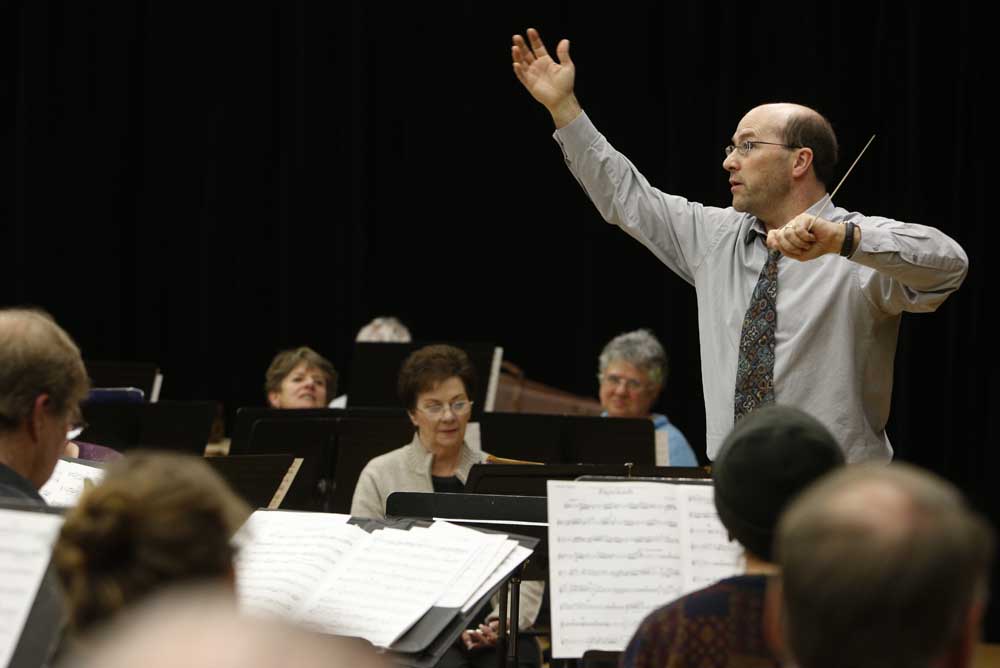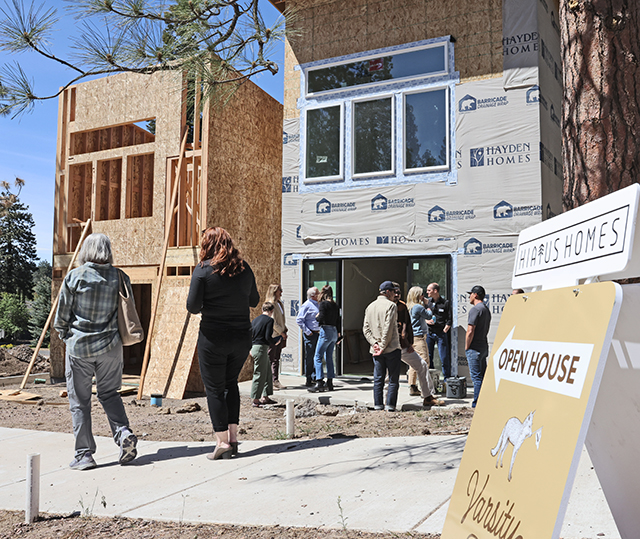A soft spot for concert band music
Published 12:00 am Friday, February 26, 2016

- Conductor Michael Gesme at work.
Music for concert band can be daunting.
“A lot of people are like, ‘It’s just loud,’ and I’m like, ‘It can be. Absolutely,’” said a sympathetic Michael Gesme, conductor of Cascade Winds Symphonic Band. The Central Oregon Community College ensemble will give its Winter Concert Sunday afternoon at Summit High School in Bend.
But, added Gesme, who of course also directs Central Oregon Symphony, “there’s a perception of what this music is, versus choral music, versus orchestra music.” And it doesn’t always weigh in favor of band music.
For his part, Gesme gives music for band a ringing endorsement. After all, he was raised on it growing up in a town of 5,000 in Illinois, just the kind of small town that gave rise to band music.
“I just have a special place in my being for wind music, because that’s what I grew up doing,” Gesme said. As a kid, he sang and played trumpet, later falling in love with orchestra conducting on his first day of college.
“For me, that’s where it all started, (with) concert band,” he said. “I have a passion for this kind of music.”
And while the ace musicians in a military ensemble — say, the U.S. Army Concert Band — may pack the house on tours, in some cities, local concert bands have lower visibility than orchestras.
One issue: Band music “does not have the long (tradition of) orchestra music,” he said. “The idea of an orchestra has been around way longer than an organized band, or a concert band.”
Orchestral music dates back several centuries, whereas band music is relatively young, evolving as we know them after the Civil War.
During the war, “there were all of these people out playing in bands out trying to support the North, support the South. All of a sudden they don’t have a job anymore, and there are all of these instruments on the market,” Gesme said. Post-war, musicians began assembling for peacetime entertainment.
“That was a moment — there’s no science to this … but these people came back home, and that’s where they can trace the quintessential concert in the park in small towns,” Gesme said.
That’s where kids are often exposed to band music, as he was. Despite its small population, his hometown had a crack concert band and a band shell at its center. Weekly live music in the park was the norm in summer. Gesme likens it to the idyll of a Norman Rockwell painting.
As a result, “That music means a lot to me. It’s a part of how I grew up. It is not lower quality,” he said. “I value it.”
Whenever he leads a concert band, “It’s been my mission when I do this that this music is first rate,” he said. While he understands when people decry its volume, Gesme also notes that band music has the capacity to be “overpoweringly cool in that regard. There are things you can do with a wind ensemble you could never do with your standard small orchestra.”
To drive the point home, Gesme pulled out a large book of sheet music, plopped it on the table in front of him and opened it to “Overture Jubiloso,” a Frank Erickson composition audiences will hear Sunday at Summit High.
With music composed for orchestra, he explained, “the bottom half (of the page) is basically five lines — first violin, second violin, viola, cello and bass.”
Those lines cover “three-fourths of the group … and then there’s flutes and oboes and clarinets, right? But in band music, there’s a line for every freaking person on the planet,” he said, exaggerating ever so slightly. “There’s just more to worry about.”
In orchestra, the string section creates the primary sound, “with all of the other colors added by the brass and woodwinds. With concert band music, you take away that one primary color (strings) … and all you’re left with are the colors — the flutes and oboes and clarinets and bassoons and three, four kinds of saxophones,” he said. “It’s a huge color palette for these composers to work with.”
That color will be heard throughout the concert’s eclectic program, which includes composer Bert Appermont’s image-rich “Noah’s Ark,” a fine example of what can be done with that palette.
“The thing we know, of course, is ‘two by two.’ And so here’s one instrument, here’s the other instrument,” he said, pointing at the page. “They’re both playing the same melody, slightly offset by each other, and that’s how the piece starts.”
More paired instruments follow in step, the result being that the listener can practically hear animals moving side by side up the ramp, said Gesme, the right maestro to do the conducting — and the worrying.
— Reporter: 541-383-0349, djasper@bendbulletin.com






